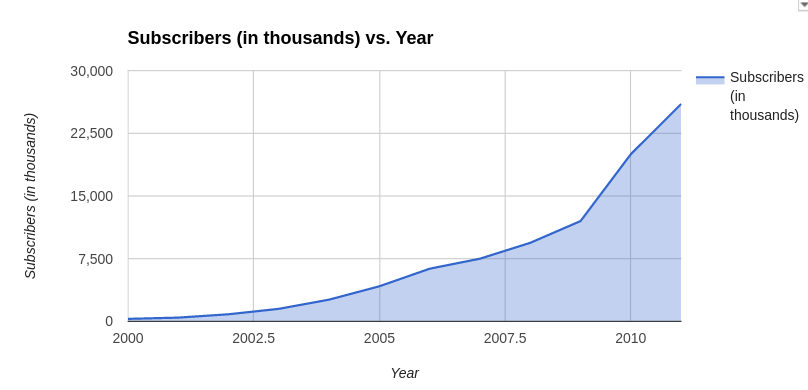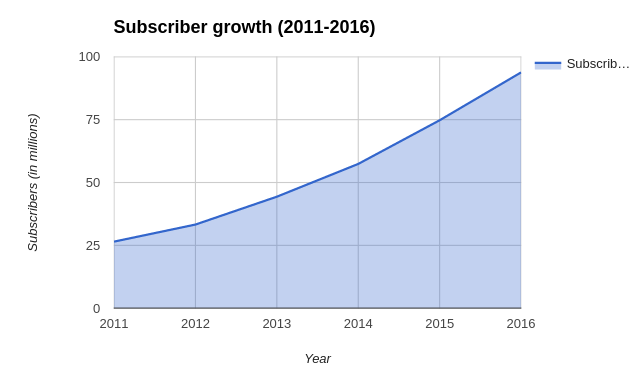The company Netflix has grown astronomically since it first came out and pioneered the way for other streaming services. In 1998, Reed Hastings and Marc Randolph created the company Netflix. Customers could browse Neflix's online catalog and order DVDs via the US Postal system. This was a new way of delivering film. Ordering by mail was unique because customers all over the country had access to an entire catalog of DVDs. This was different than other film stores because customers were not limited only to what their nearest store had in stock. While shipping DVDs was innovative it did pose a problem. Because these DVDs were being sent in the mail it would take multiple days to arrive. Blockbuster stores had a leg up because customers could buy a DVD from their and watch their movie right away. The second problem that arose was the rate of repeat renters was very low. People would try Netflix but would not continue to use the company. Additionally, people tended to gravitate towards whatever the newest releases were. This was problematic for Netflix because people would not tend to rent older movies. In order for Netflix to break even on a DVD they needed to rent it out on average fifteen to twenty times.
To combat these issues Netflix needed to think of a solution. To solve the problem of not having repeat customers, Netflix created a subscription based business model. This was a successful tactic because since users were locked into their subscription they were much more likely to rent from the platform again. Additionally, to cope with the issue of how long it took to deliver the DVDs, Netflix implemented a queue. This queue allowed users to preselect what movie they wanted to watch next. With this late fees were taken away. Netflix believed that customers would be incentivized to return their DVDs because it meant that they could get another DVD once the first one was received. Another new tactic that was introduced was the recommendation feature. Based off of what customers previously rented they were given recommendations to other films that they would like. This was beneficial because users were given suggestions to older movies which in turn helped the company to profit off of their older DVDs. The concept of "you may also like" has become a standard tactic in all of the popular streaming services today. Netflix introducing a subscription model is what put them on the map. According to the article, "It was Reed’s insight that the subscription model would resonate with consumers in a compelling way. He re-engineered the Web site and software to support a subscription model…we began to grow exponentially overnight. In 1998, I think the business did $1 million in revenue. In 1999, we did $5 million, then $35 million and then $75 million and $150 million and then almost $300 million…We were I think five years to $500 million and another three years to a $1 billion, all because of the subscription model.”
Then in 2000, Netflix introduced their unlimited rental program. This allowed subscribers to rent up to four DVDs at a time for only $19.95 a month. By 2007, Netflix made one billion dollars in revenue. In 2008, Netflix started devolving the idea of becoming a streaming service. Netflix partnered up with the company Microsoft to make a streaming service app on their console Xbox 360. This allowed Xbox Live Gold members to access Netflix on their television through their Xbox. This laid the ground work for how Netflix and other streaming services work today. As technology continued to evolve Netflix has grown with it. The invention of smart televisions allowed Netflix to stream their content to millions of users.
The company Netflix revolutionized streaming services. Today, 247.2 million people have a Netflix subscription. Now other streaming have arisen such as Hulu, Peacock, and MAX. Streaming services have become so popular because it allows people to have access to thousands of movies and shows instantly. Additionally, viewers love being able to binge series.
For more information click here


No comments:
Post a Comment